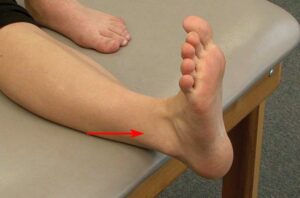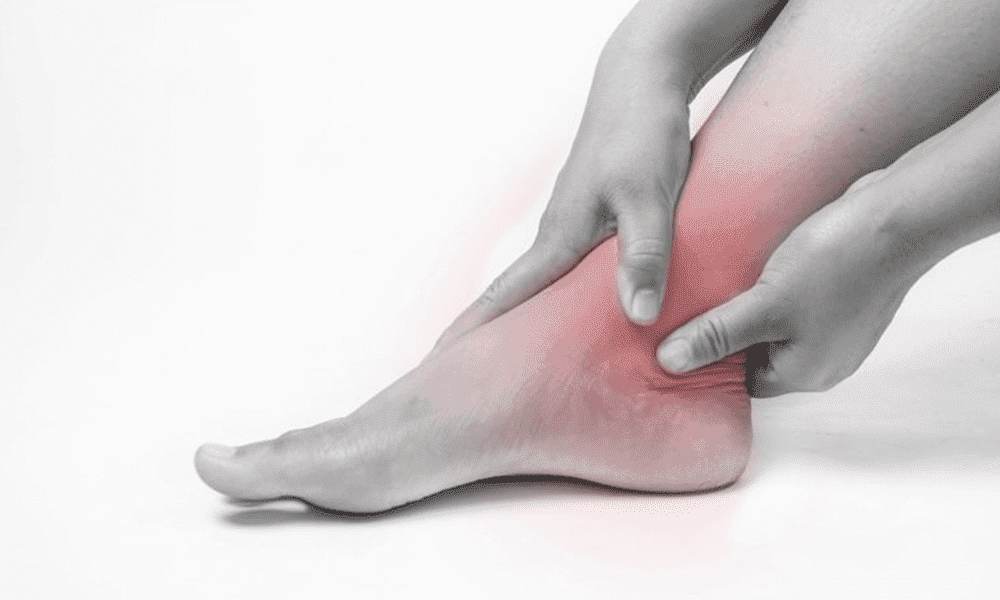If you think you may have sprained your ankle, there are a few things you can do to determine whether or not that is the case. In this blog post, we will outline the steps you can take to self-diagnose a sprain, as well as provide some tips on how to treat it. Stay tuned for more information!
Contents
What Is Sprain?

A sprain is an injury to a ligament, which is the tough tissue that connects bones at joints. A ligament can be overstretched or torn when a joint is bent too far in the wrong direction.
Most sprains occur in the ankles and knees. Wrist, elbow, and finger sprains are also common.
How Do You Know If You Have Sprain In Your Ankle?

There are various ways you can identify if you have a sprain in your ankle. The most common sign is a pain in the area of the injury. Other signs and symptoms may include:
- swelling
- tenderness
- bruising
- difficulty walking or bearing weight on the affected ankle
- deformity, such as an obvious bulge on the side
other symptoms are:
- Severe pain that does not improve with home treatment
- Signs of infection, such as redness, warmth, or pus drainage from the wound
- Numbness or tingling in the foot
- A deformity in the foot or ankle joint
- Bone protruding from the skin
- Severe swelling that does not improve at home
These signs and symptoms can vary in intensity from mild to severe. If you have any of these signs or symptoms, it’s important to see your doctor for an accurate diagnosis.
Causes
There are various causes of sprain in your ankle. they are:
- Overstretching or tearing of the ligaments: The ankle joint is held together by strong bands of tissues called ligaments. Ligaments can be overstretched or torn when the foot is forced beyond its normal range of motion. This can happen during a fall, a sudden twist, or an awkward landing from a jump.
- Fracture: A fracture is a break in the bone. A fracture in the ankle can occur from a direct blow to the area or from an indirect force that causes the bone to break. A fracture usually occurs along with ligament damage.
- Dislocation: A dislocation occurs when the bones of the ankle joint are forced out of alignment. This can happen from a direct blow or an indirect force that impacts the joint.
- A fall: One of the most common causes of an ankle sprain is a fall. This can happen from slipping on ice, falling stairs, or tripping over something.
- Sudden twist: A sudden twist can occur when you land awkwardly from a jump or unnaturally turn your ankle.
- This can also happen during sports that involve quick changes in direction, such as basketball, football, or soccer.
- Direct blow: A direct blow to the ankle can occur from a tackle in football or being hit with a baseball.
- Indirect force: An indirect force can occur when the foot is planted awkwardly and the ankle turns in an unnatural way. This often happens during sports, such as tennis or basketball.
- Walking on uneven surfaces: Walking on uneven surfaces, such as gravel or rocks, can also lead to an ankle sprain.
These are the causes of sprain in your ankle. If you have any of these causes in your ankle then you must have to consult with a doctor.
How long does a sprained ankle take to heal?
If you’ve rolled your ankle, it’s important to know whether or not you’ve sprained it. A sprain is a tear in one or more ligaments, the tough bands of tissue that connect bones. A severe sprain can take weeks or even months to heal properly.
Depending on the intensity of your sprain, it could take a couple of weeks for a milder injury to heal and up to three months for a more grave sprain. If you have a severe sprain, your doctor might recommend that you wear a cast for several weeks. It usually takes around four to six weeks for a mild ankle sprain to heal completely.
Treatment options
There are various treatment options. They are as follows:
Rest
This is the most important thing you can do. Take a few days off from your usual activities and give your ankle time to heal. For instance, if you play sports, take a break from practicing or competing.
Ice
Applying ice to the injured ankle can help reduce pain and swelling. Do this for 20-30 minutes at a time, several times a day. For example, you could put ice on your ankle for 20 minutes, take the ice off for 10 minutes, and then put the ice back on for another 20 minutes.
Compression bandages
These can also help reduce swelling. Be sure not to wrap them too tightly, as this can cause additional pain and swelling.
Exercise
Exercise is important for maintaining joint and muscle health. It can help prevent or relieve many types of pain, including sprains. It includes:
- Walking
- Jogging
- Running
- Jumping
- Stationary biking
- Swimming
Physical therapy
Your doctor may also recommend physical therapy to help you recover from a sprained ankle. A physical therapist can teach you exercises to help strengthen the muscles and ligaments around your ankle, which will help prevent future injuries. After the initial healing period, you might need to do physical therapy exercises to help regain range of motion and strength.
Surgery
In rare cases, surgery may be necessary to repair a torn ligament or tendon. This is usually only recommended if you have a severe injury that does not heal with conservative treatment. It includes:
- Arthroscopic surgery
- Open surgery
Rehabilitation
After your ankle has healed, it is important to have rehabilitation. This will help restore the range of motion and prevent future injuries. Your doctor or physical therapist can develop a rehabilitation program specifically for you.
Bracing
Most of the time, when you sprain your ankle, it will swell up pretty quickly. To help reduce the swelling, you can put a compression wrap or an ice pack on your ankle.
Some people find ankle braces helpful for stability.
Recovery time
Most ankle sprains will heal within a few weeks with rest, ice, and elevation. However, some people may have persistent pain or weakness that lasts for months. Severe injuries may require surgery and a longer period of recovery. If you have any concerns about your recovery, be sure to talk to your doctor.
If you think you may have sprained your ankle, it is important to seek medical attention. This is especially true if the pain is severe, or if you are unable to put any weight on your foot. A healthcare provider can determine whether or not you have a sprain and provide proper treatment.
Conclusion
It may be concluded that “Did I sprain my ankle” is a valid question to ask. However, the answer may not be as simple as a yes or no. Some other factors such as the severity of the injury and whether there is any actual damage to the ankle joint itself need to be considered before a definite answer can be given. With this in mind, it is always best to consult with a medical professional if there is any doubt about the extent of an injury.
Physical Therapy help patients recover from pain. If you’re experiencing Back pain, Shoulder pain, Knee pain, Neck pain, Elbow pain, Hip pain, or Arthritis pain, a physical therapist at MantraCare can help: Book a physiotherapy session.


